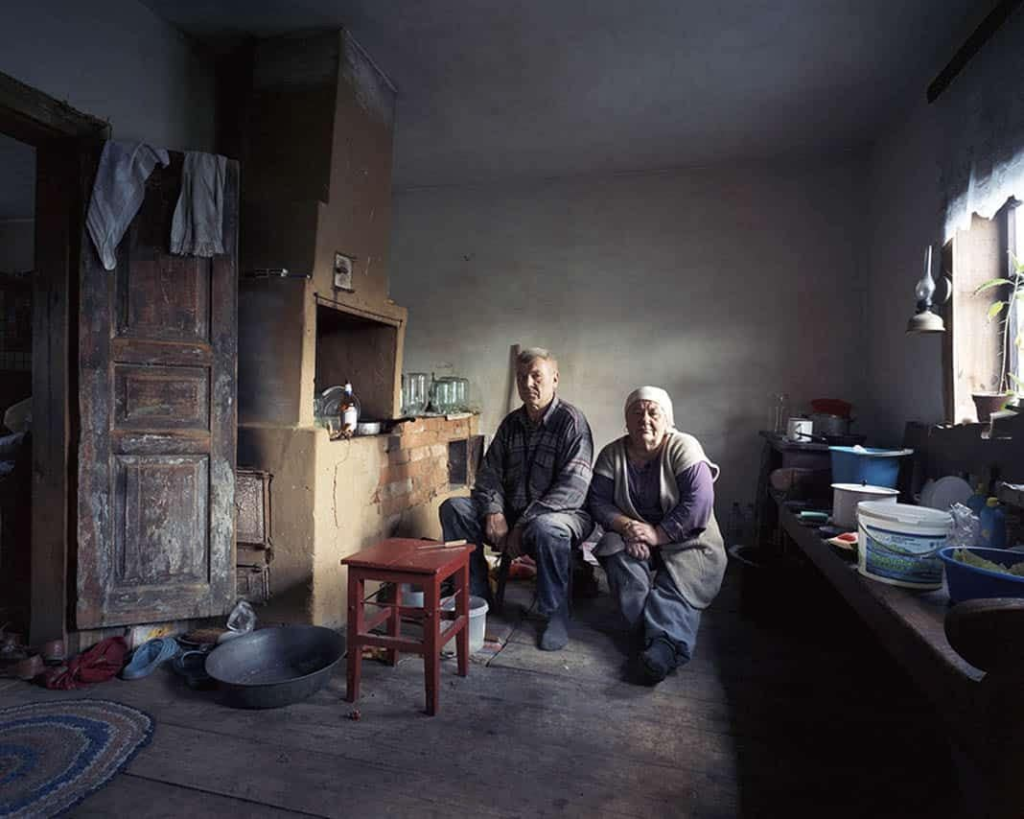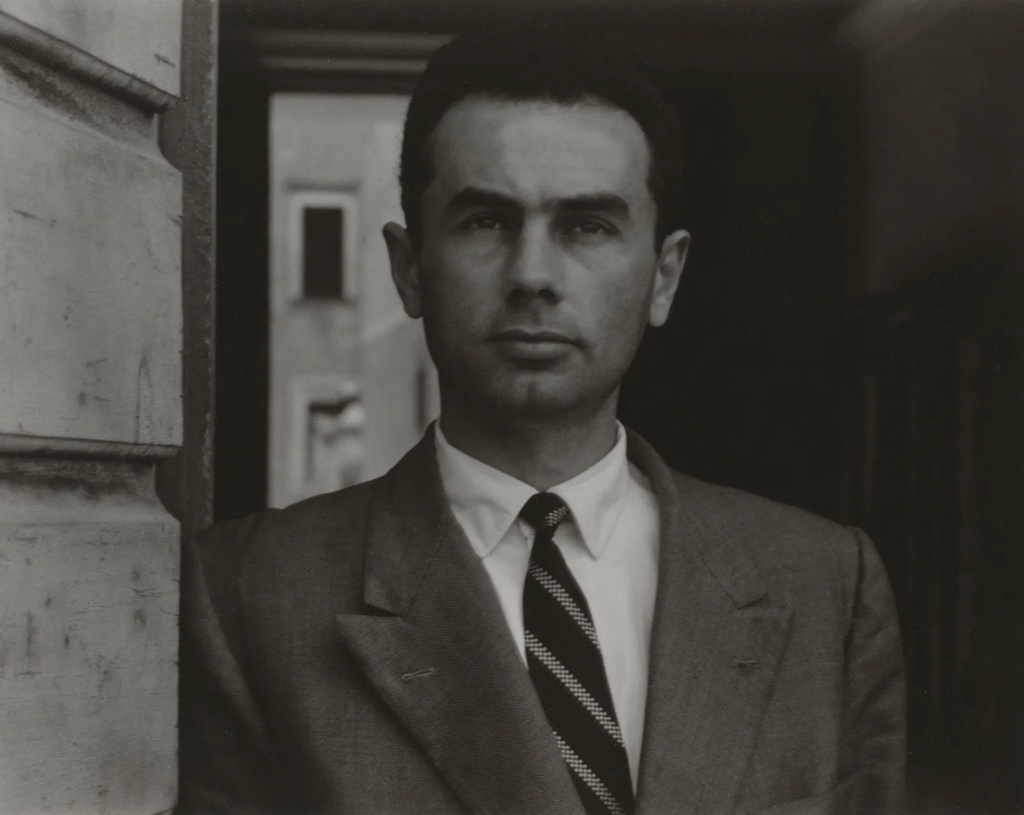
At first glance, the photograph appears intimidating, with moody green tones plastered throughout the image and low levels of light within the foreground, implying something potentially sinister or disturbing. The man in the portrait appears to be some sort of powerful businessman, as indicated by his pose and his physical age, which creates a sense of seniority.
The photo seems to have been taken in quite a low-light environment inside an abandoned warehouse of some kind. However, it also can be assumed that Newman used studio lights on both sides of the man to illuminate certain features and portray him as a more menacing villain.
In the image, there is large industrial equipment and machines placed in the background, such as cranes and trains – various other mechanical parts and accessories. It could be assumed that the setting of the photo is a factory for trains, and that the man is the owner or manager. The man is placed in the lower centre of the photo, wearing a suit, with white hair gelled to the back of his head, hunched over, interlacing his fingers and making a direct mode of address with the audience. This suggests that he is a man of business, and combined with the low lighting, implies moral corruption.
This photograph is presented as a protest piece against maybe a corporation/company or even the individual in the photo, as shown in the vilifying of the man within the image using various elements of mise-en-scene. Depending on when it was taken, it could refer to many different things – the environment, wars and conflicts, the economy or inflation.
This photograph was taken in 1963. It portrays German industrialist, Alfred Krupp, as ominous and villainous, his body language suggesting he is scheming or has committed some form of malicious act/plot. This is because Krupp was a large arms manufacturer and industrialist, supplying the German armies with weaponry used particularly during the Second World War, which in turn caused millions of deaths and global suffering.




































